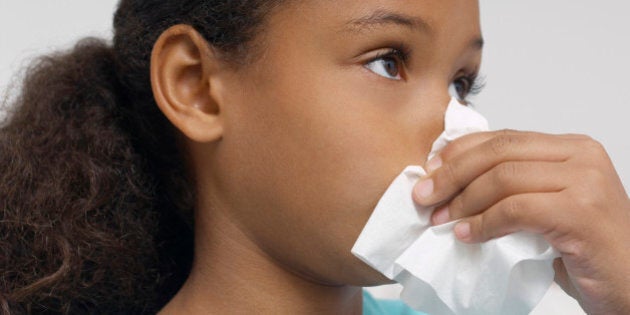
It's September, and Canadians are gearing up for the return to school and regular work schedules. The usual headaches are certain to recur, including increased traffic, greater workloads, homework, and attempts to get up in time to avoid arriving late.
Another annual tradition around this time is an increase in the number of people getting sick. The usual suspects are cold viruses, but other infections may also make their mark such as gastrointestinal troubles, eye and ear troubles, and fevers. For anyone unfortunate enough to fall victim to these ailments -- or care for those suffering -- this time can be even more frustrating.
The trend for an uptick in respiratory infections in September is pretty much a given now as expected. August is relatively quiet and then that spike in cases is seen. The actual number of cases reported at health labs may seem relatively low but these represent only those individuals who consulted a doctor and were referred for a test. In essence, the numbers are only a reflection of a much larger population.
Although this increase is common, it doesn't have to affect you. After all, for the most part, getting sick is preventable. All one needs to do is understand how these infections are spread and then employ the necessary hygiene steps to stay safe. Granted, they are not perfect but can significantly reduce the risk of having to stay home to heal.
The reason for the increase in infection spread is quite simple. It's officially known as grouping of susceptibles, which as the name implies, means people who are at risk of becoming sick tend to gather together. This could be a school, workplace, bus or subway, or cafeteria. All that's needed is one infected person to manifest a mini-outbreak.
Thankfully, infected people are easily noticed. They tend to look sick and exhibit symptoms, such as coughing, sneezing, and overall malaise. Granted, this could also be due to allergies. Yet, for anyone concerned, keeping a good six feet of distance can keep the viruses away. This might mean holding off on hugs and other close contact for a week or so but this should be socially acceptable.
Social distancing may be the best way to avoid the chances for direct spread of these viruses. However, indirect spread is far more difficult to control. This involves picking up the virus from a surface and then transferring it to the nose or mouth using the hands. According to the Centers for Disease Control and Prevention (CDC), up to 80% of infections occur by this route.
There are only two ways to prevent this type of spread. The first is to ensure all touched surfaces are clean and preferably disinfected. This may sound impossible because for the most part, it is. It's due to a natural human phenomenon known as the microbial cloud.
Each and every hour, millions of these invisible creatures are sent from your body onto surfaces. Here, they rest until they are picked up or die. Most are harmless, but some can cause infection. Unfortunately, when you have a grouping of people, such as in a classroom or at the workplace, figuring out where the pathogens reside can be impossible as the environment becomes a microbial ecosystem similar to a jungle.
Some have attempted to identify the riskiest surfaces but this hasn't been much help. Based on research, everyday objects, such as toys, pencils, keyboards, desks, water fountain handles, and doorknobs all pose some level of concern. This means they have to be cleaned regularly to keep everyone safe. Needless to say, this can be an exercise in frustration.
The other means to avoid indirect infection is far simpler and easier to perform: hand hygiene. This may sound like a broken record yet this practice is the most important and most effective means to stay safe. One can use soap and water or in absence of a sink, a hand sanitizer with 62-70% alcohol with 15 seconds wetness. Either will work perfectly well to reduce the level of contamination on the hands.
The latter option has gained ground over the years and many institutions now have hand sanitizer stations. In addition, people can carry a personal hand sanitizer bottle, which is perfect for any backpack, purse, or fanny pack. For those business travellers, many of these bottles are less than 100ml making them permissible for carry-on luggage. While this does not mean the person will actually use the product, at least the means to stay safe is present.
There is one final means to stay safe although this has become quite controversial over the last two decades. For a number of diseases, such as measles, chicken pox, whooping cough, and flu, vaccines are available. Although the likelihood of a vaccine-preventable outbreak is quite low, as recent history has shown, they do tend to occur in Canada.
Some provinces have enacted mandatory vaccination schedules however in other areas of the country this option remains a personal choice. Regardless of the situation, if someone qualifies for a vaccine -- meaning they are healthy enough and do not have any conflicting medical conditions -- then it would be good to get the shot. It will help to protect against some rather nasty infections and help to keep those who cannot be vaccinated safe.
Follow HuffPost Canada Blogs on Facebook